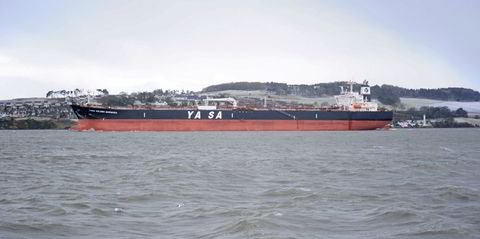Frontline chief executive Lars Barstad believes turning brisk VLCC activity into strong rates is a “grind” in current markets.
The tanker owner’s boss told an earnings call that the company is “quite confident” about the sector’s prospects this year.
But Barstad said: “What we’re observing is that the market is tight, it is very tight. But the owners are potentially competing against each other, which we shouldn’t really do.”
“And the charterers are playing their cards extremely well, basically just feeding the market with cargoes and pinpointing the owner and the schedule for that ship,” he added.
Barstad explained that Frontline has a significant position in the market and picks up more information than most owners.
“And we see that the activity is actually very, very good,” he told the call.
“But for the owners to translate that into significantly higher earnings has been very, very hard,” Barstad argued.
The CEO said: “I do believe we are in a firming grind on utilisation, and this is going to continue. I still think we’re going to have the seasonal slowdowns and seasonal upward movements.
“But I think it’s quite positive to see how quickly the VLCC market went from $35,000 to $40,000 a day, going all the way up to north of $90,000 per day, and then obviously falling back,” he added.
“When the appearance of certain tight pockets comes, this market is on fire.”
Sparse deliveries
Barstad pointed out that only one new VLCC will be delivered this year, and potentially only five or six in 2025.
“It’s many, many, many years since we’ve had this kind of supply growth, and we’re losing quite a few vessels to age. So I’m positive, but it’s very difficult to gauge,” he told the call.
“Are we going to go straight into a $100,000-per-day market, or are we going to grind $50,000, $60,000, $70,000? It’s anybody’s guess,” Barstad concluded.
The Baltic Exchange assessed spot VLCC rates at $36,300 per day from the Middle East to China on Thursday.





